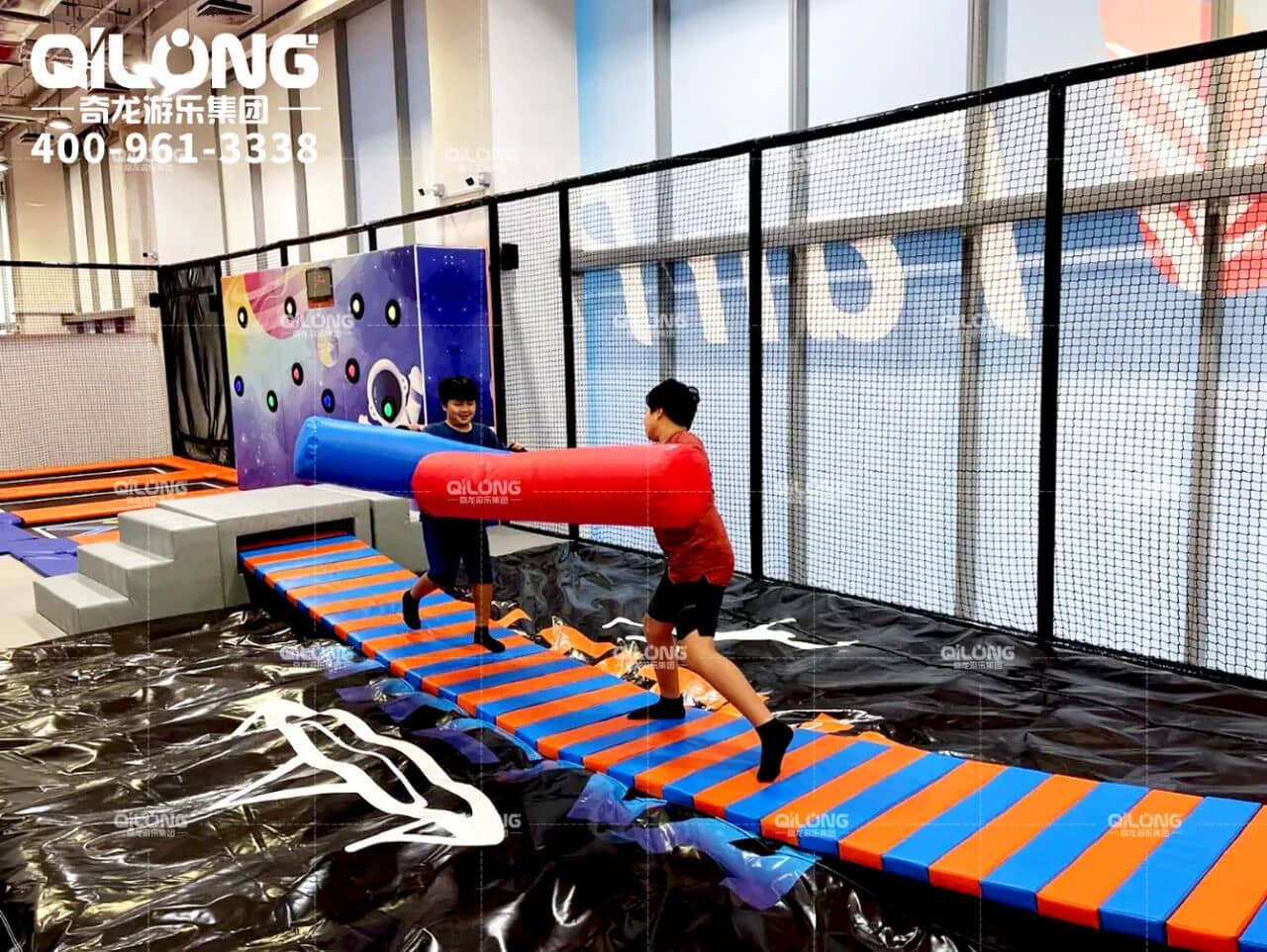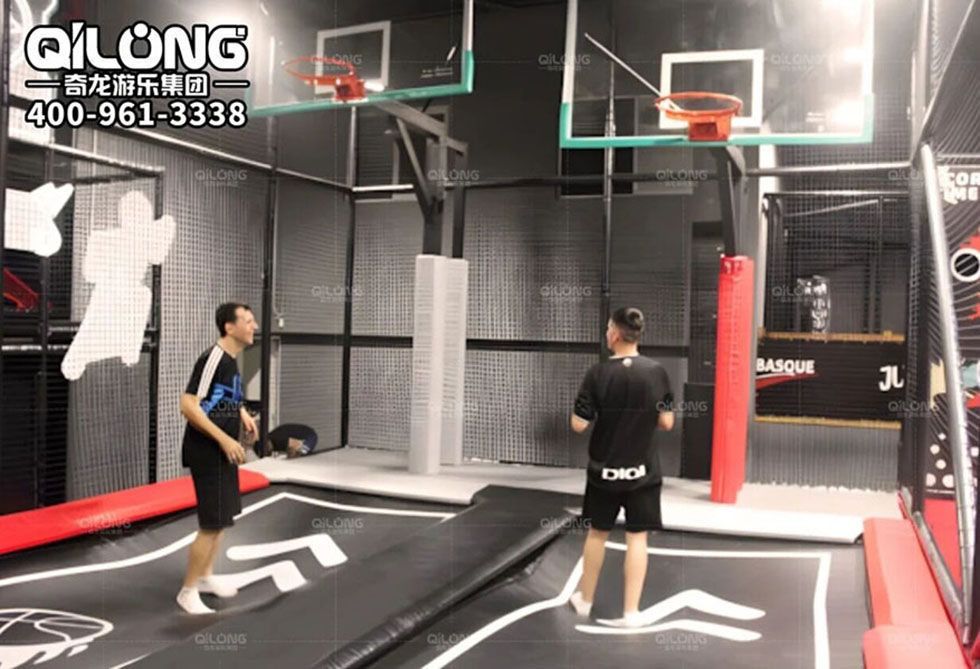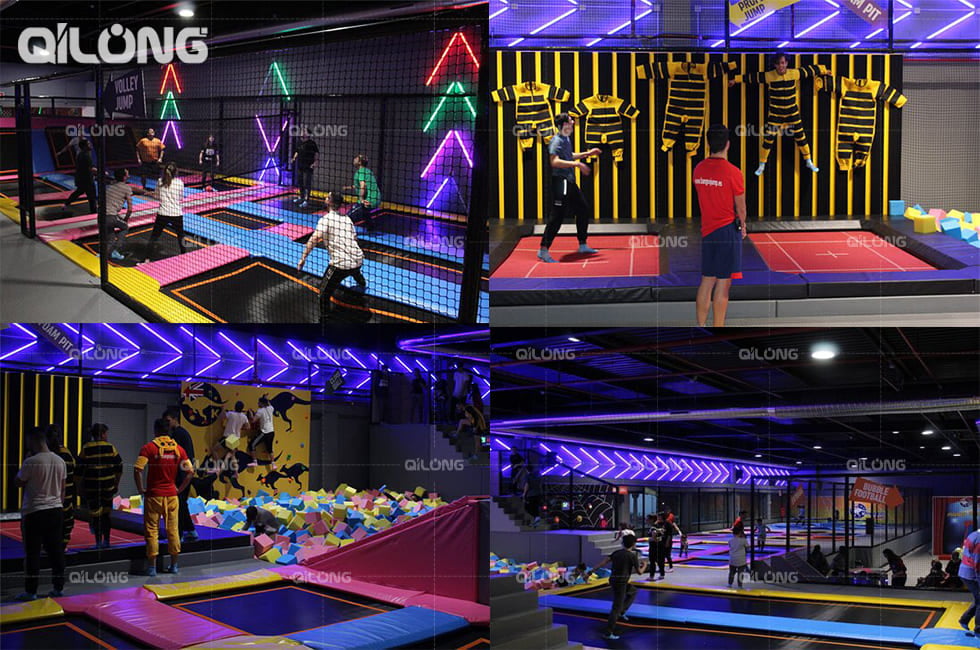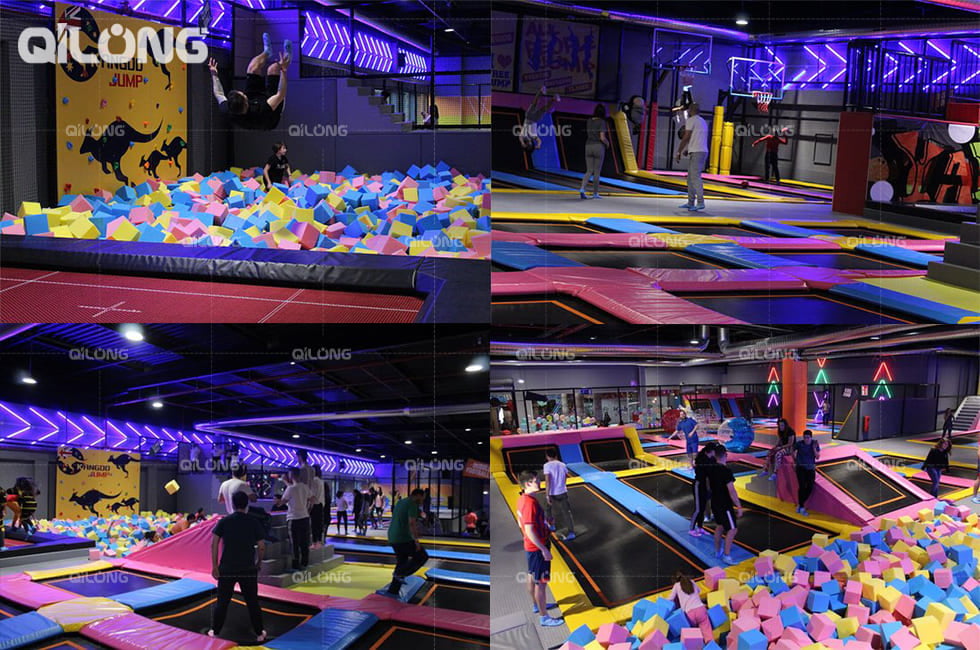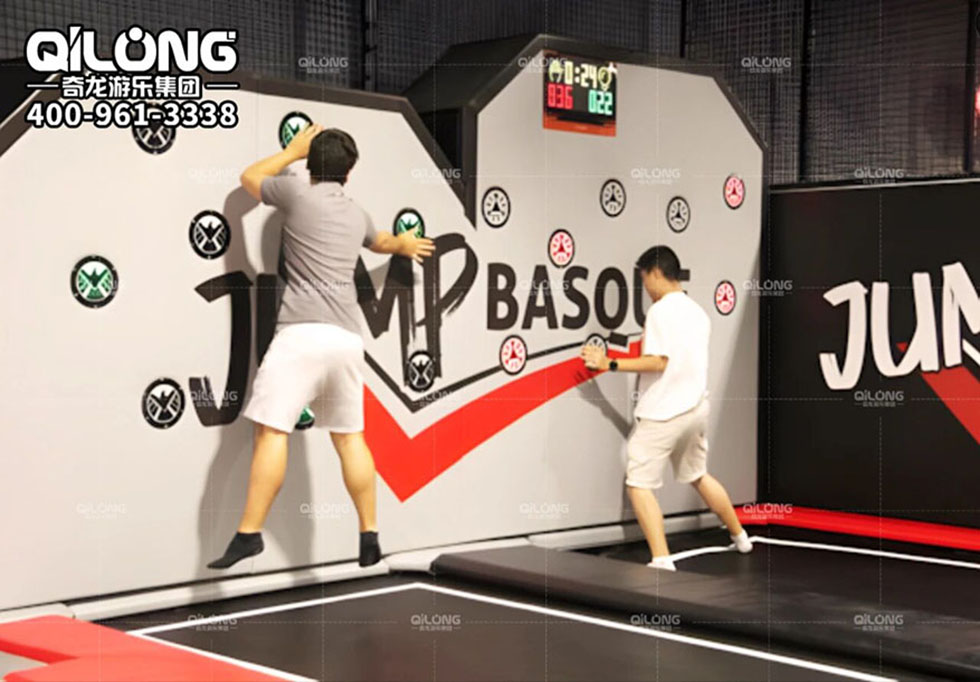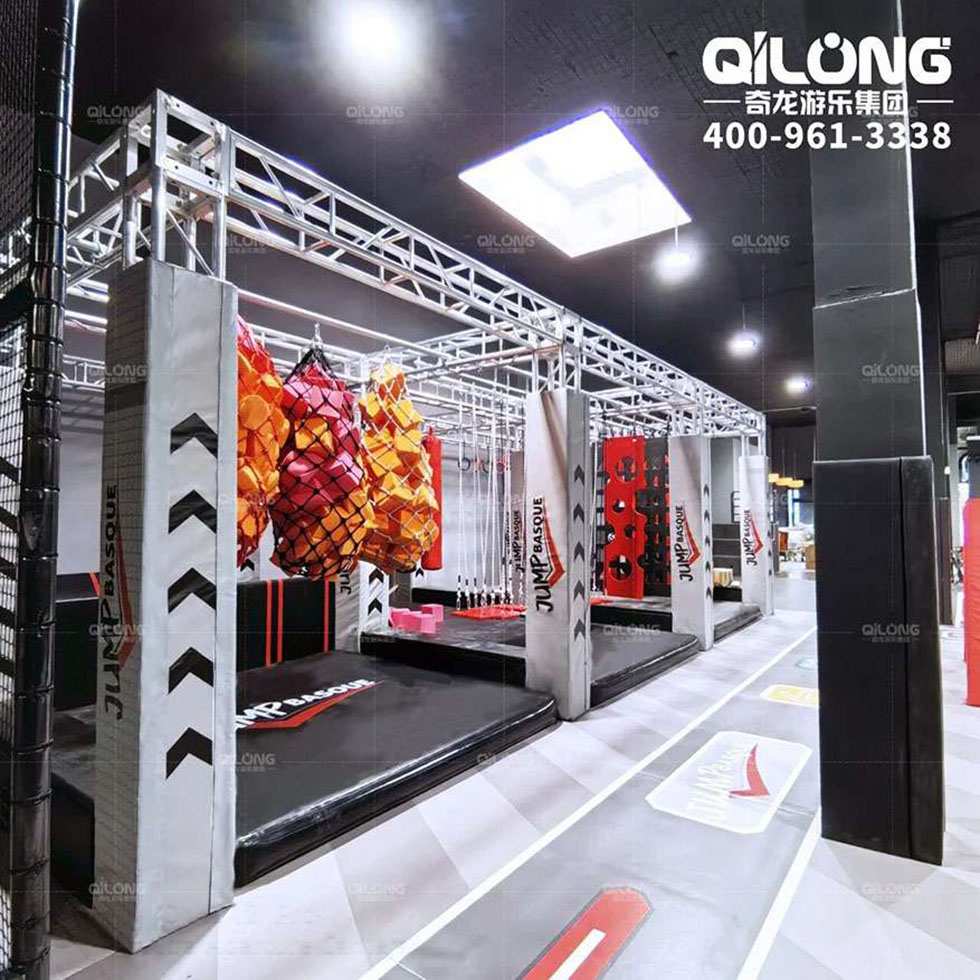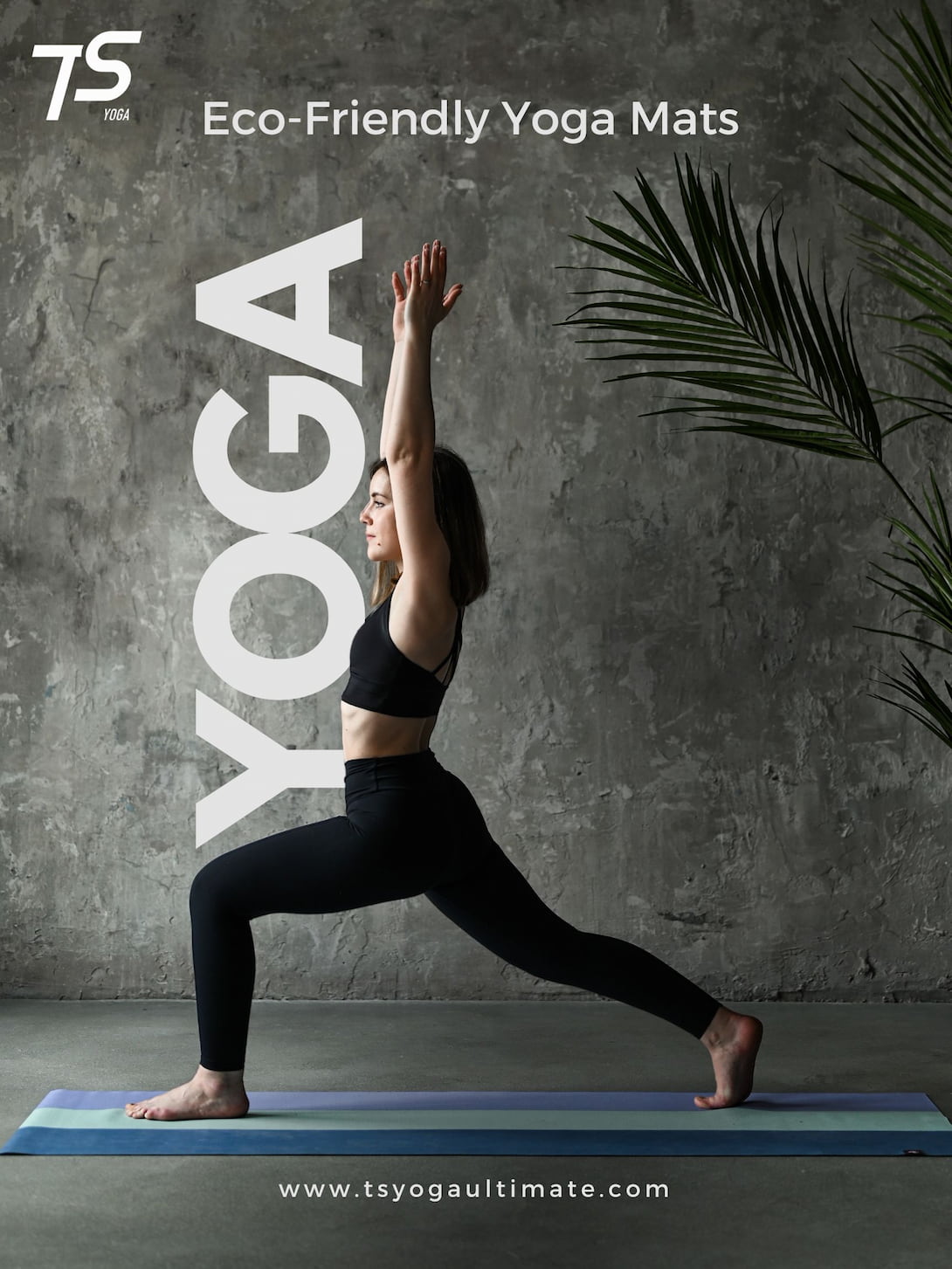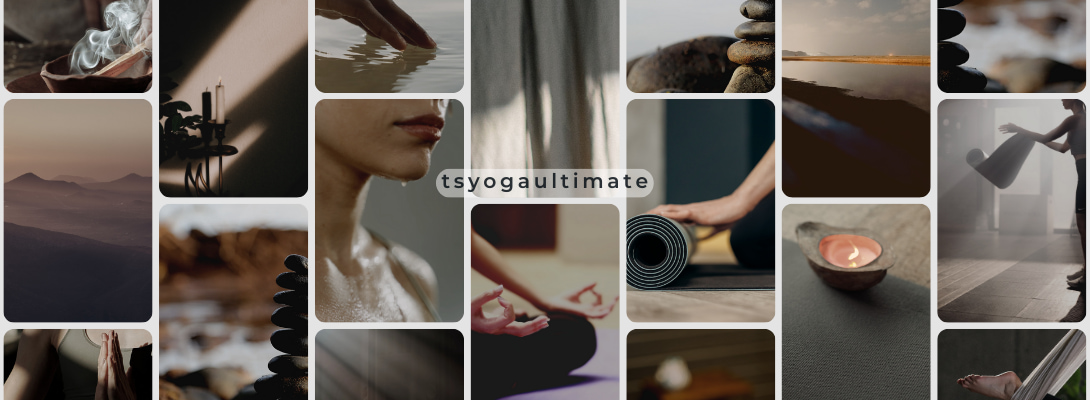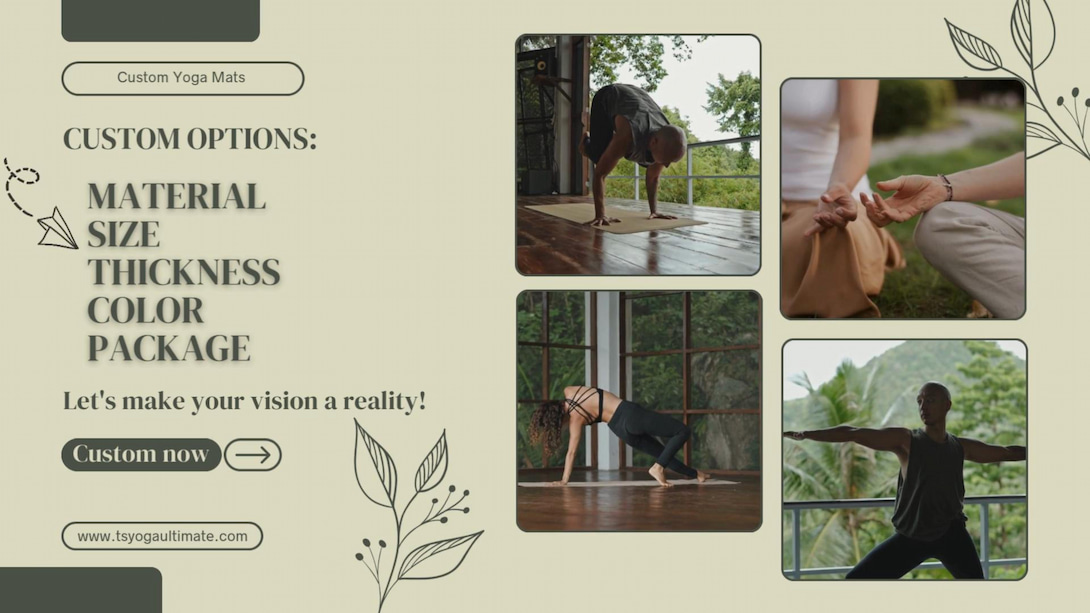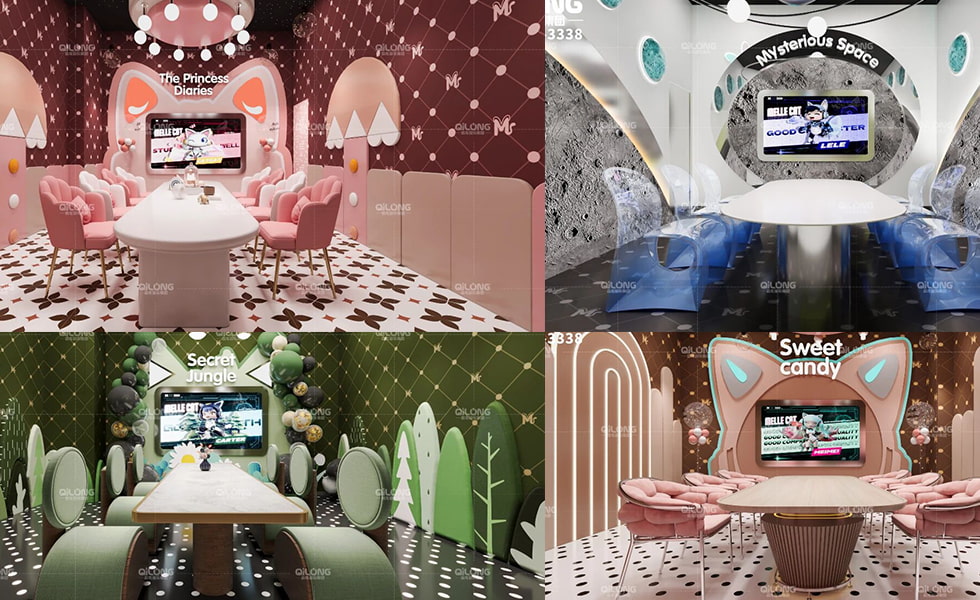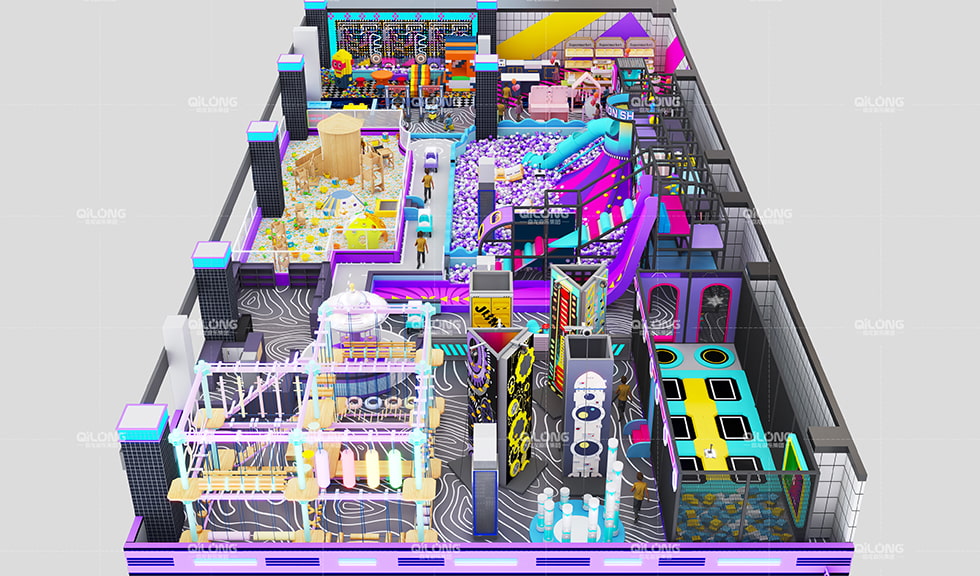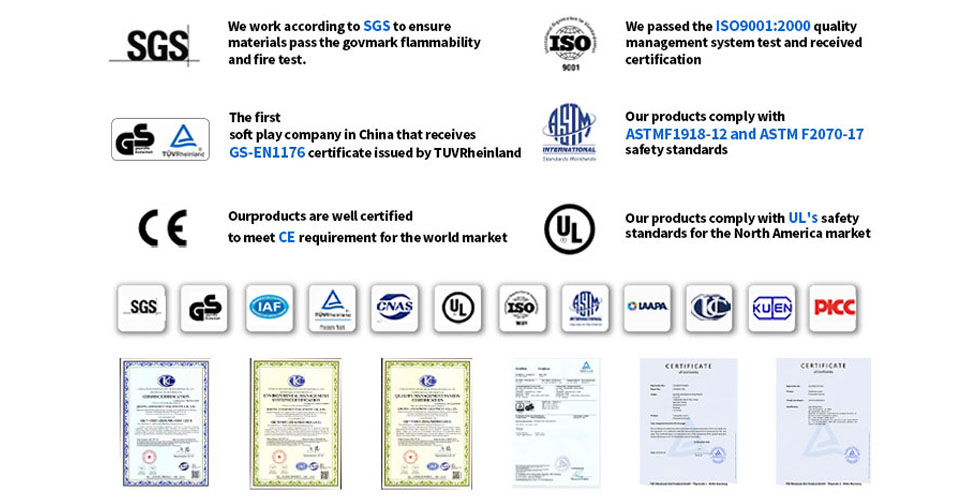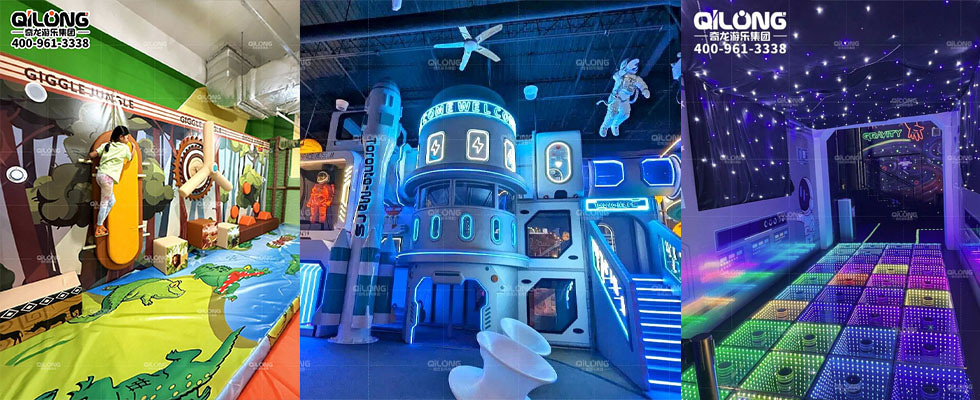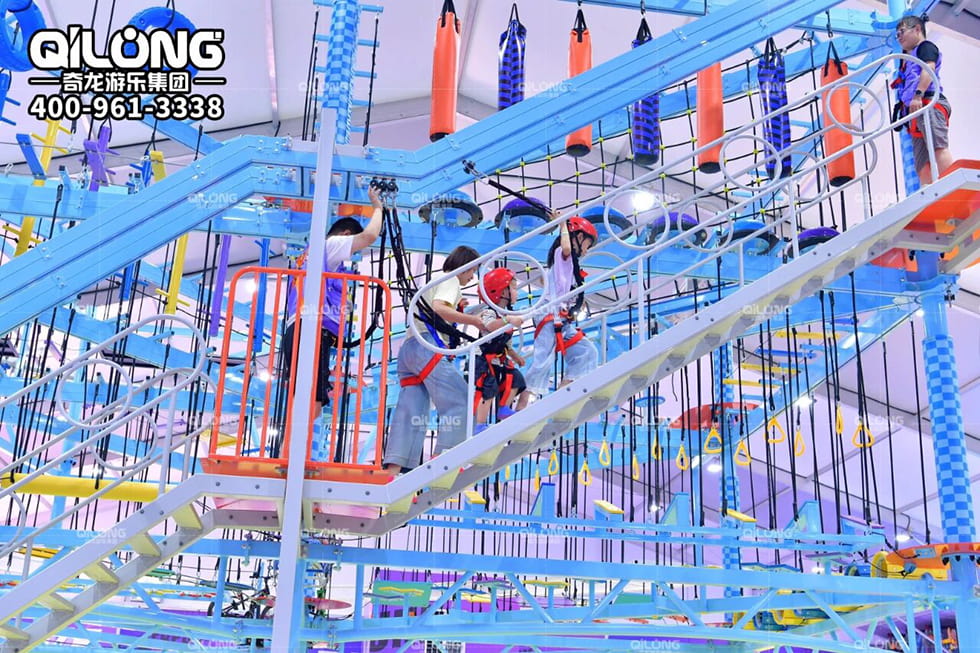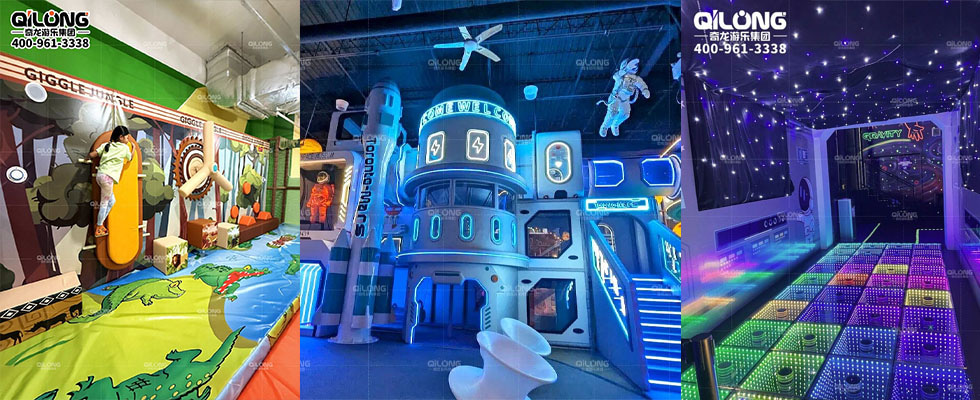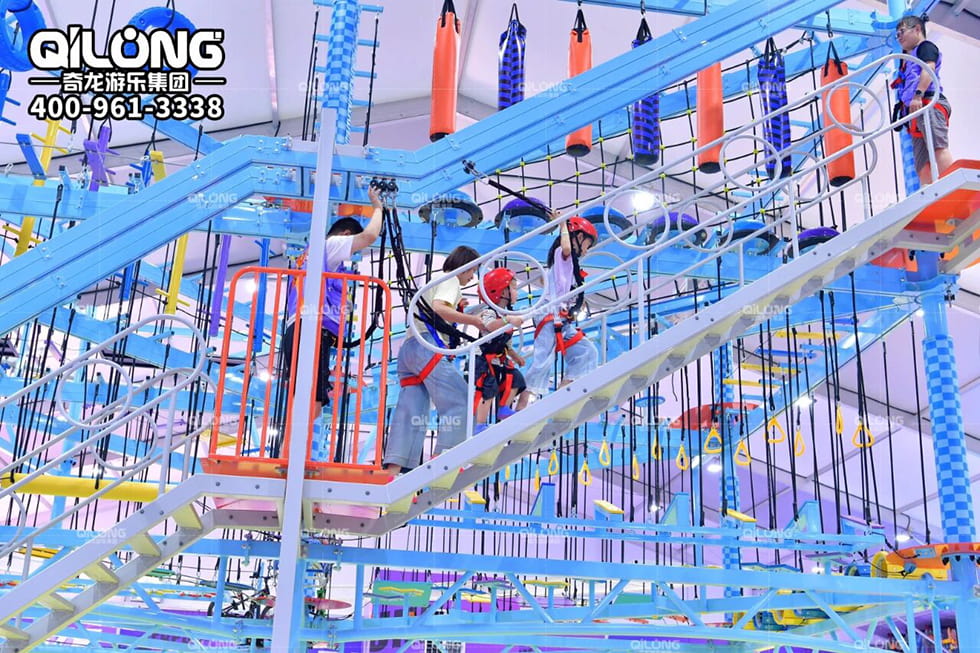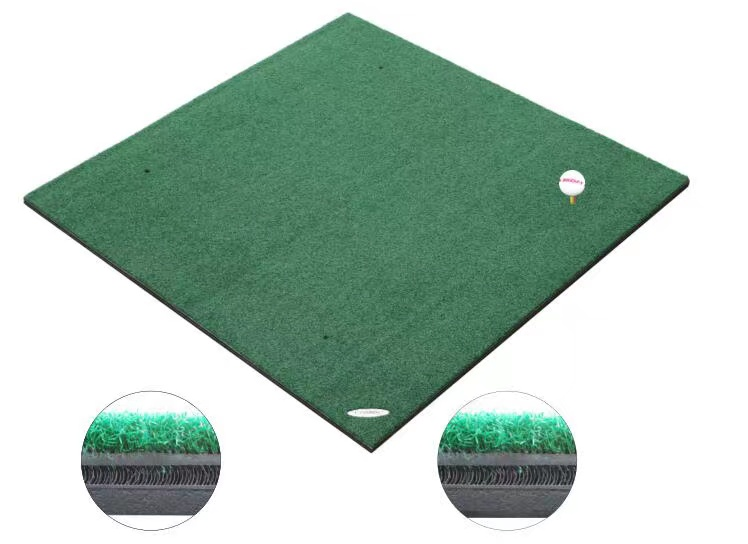The indoor entertainment industry is not just bouncing back; it’s soaring to new heights. As we move towards 2025, the trampoline park is evolving from a simple venue for jumping into a dynamic, multi-faceted entertainment hub. For investors, this evolution presents a golden opportunity—but only for those who understand the emerging trends. At Qilong Amusement Group, as a manufacturer of indoor playgrounds and trampoline parks, we’re at the forefront of this transformation. We’ve seen firsthand what separates a thriving park from a failing one. This guide will walk you through the three critical trends shaping the future of the trampoline park business and how you can leverage them for maximum return on investment.
Trend 1: The Rise of the “Hybrid” Entertainment Model
Gone are the days when a trampoline park could succeed on trampolines alone. The most successful venues in 2025 will be hybrid parks that blend various attractions under one roof. This strategy diversifies revenue streams and broadens your target demographic.
- What it looks like: Imagine a space where a main court for freestyle jumping coexists with a challenging Ninja Warrior Course, a dedicated Toddler Zone with soft play equipment, and even interactive climbing walls. Some parks are even adding VR arenas, arcade zones, or high-end cafes to appeal to parents and older teens.
- Why it matters for investors: A hybrid model increases the per-customer spend and dwell time. A family might stay for three hours instead of one, as kids rotate between activities. It also makes your park a destination for birthday parties, corporate events, and teen outings, maximizing your booking potential year-round.
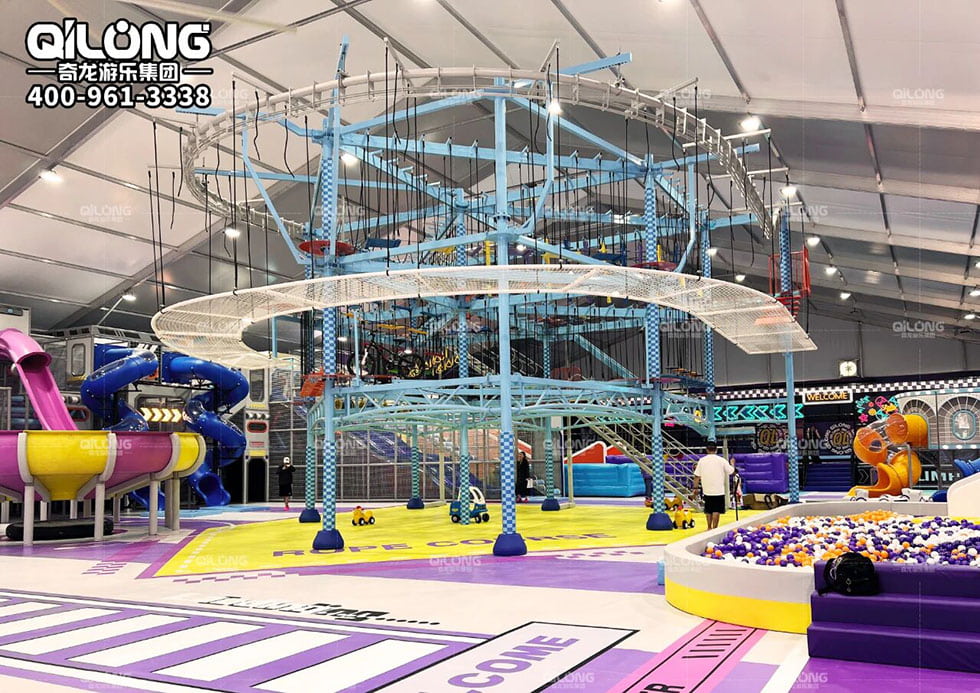
Trend 2: Uncompromising Safety and Hygiene as a Core Brand Pillar
In a post-pandemic world, safety and hygiene are not just operational requirements; they are your most powerful marketing tools. Parents need to feel 100% confident that their children are safe in your care.
- What it looks like: This goes beyond basic padding. It means investing in park equipment with Patented Safety Features, using high-quality, durable materials that withstand heavy use, and implementing visible, rigorous cleaning protocols. It also means having well-trained, attentive staff and a clear layout that prevents collisions.
- Why it matters for investors: A sterling safety record builds trust and drives word-of-mouth referrals—the most effective and least expensive form of marketing. It also minimizes liability and insurance costs. As a manufacturer, we prioritize safety above all else, and we can guide you on the best-in-class solutions to protect your guests and your business.
Trend 3: Immersive Theming and Instagrammable Design
A warehouse filled with trampolines is no longer enough. The parks of 2025 will be immersive environments that tell a story and create unforgettable memories.
- What it looks like: From a jungle safari theme with custom-printed padding and artificial greenery to a futuristic neon-lit “cyberpunk” arena, theming is key. Every element, from the color scheme to the lighting and sound effects, should work together. The goal is to create spaces that are “Instagrammable,” encouraging visitors to share their experiences online.
- Why it matters for investors: Strong theming differentiates you from competitors and creates a powerful brand identity. User-generated content on social media acts as free advertising, exponentially increasing your reach and attracting a younger, digitally-savvy audience. Our Custom Park Design & Theming services can help you bring any vision to life.
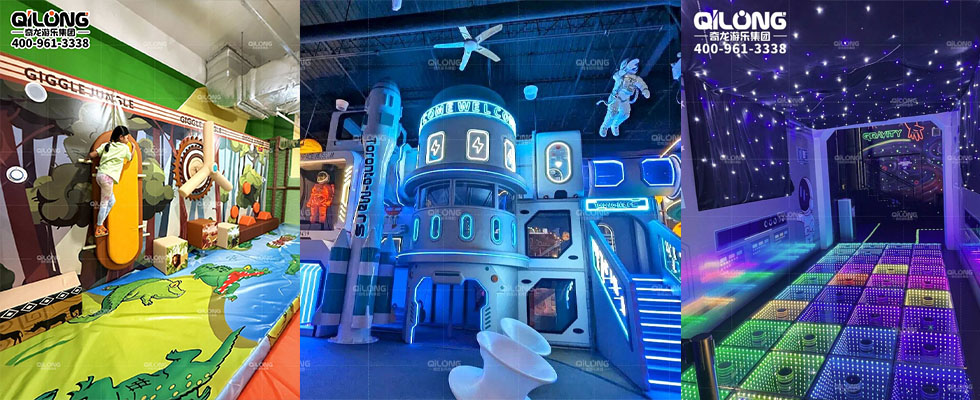
Your Investor’s Checklist for 2025
Ready to capitalize on these trends? Use this checklist to evaluate your next project:
1. Plan for a Hybrid Model: Don’t just build a trampoline park; build an entertainment center. Incorporate attractions like a Ninja Warrior Course or a soft play zone.
2. Budget for Technology: Allocate funds for a smart management system and interactive attractions.
3. Schedule for Fitness: Design your class schedule and marketing to attract the fitness crowd.
4. Prioritize Safety in Your RFP: When choosing a manufacturer, demand details on their safety features and materials.
5. Invest in a Unique Theme: Work with a design team to create a visually stunning and memorable environment.
Conclusion:
The future of the trampoline park industry is bright, dynamic, and full of potential. Success in 2025 will belong to the investors who look beyond the bounce and build comprehensive, safe, and unforgettable experiences. By embracing these trends, you’re not just investing in a business; you’re investing in a community destination.
The most critical decision you’ll make on this journey is choosing the right partner to build your vision. As an experienced manufacturer, we provide more than just equipment; we provide end-to-end solutions from design and theming to installation and support.
Ready to build the next generation of trampoline parks? Contact us today for a free consultation and a custom 3D park design.
